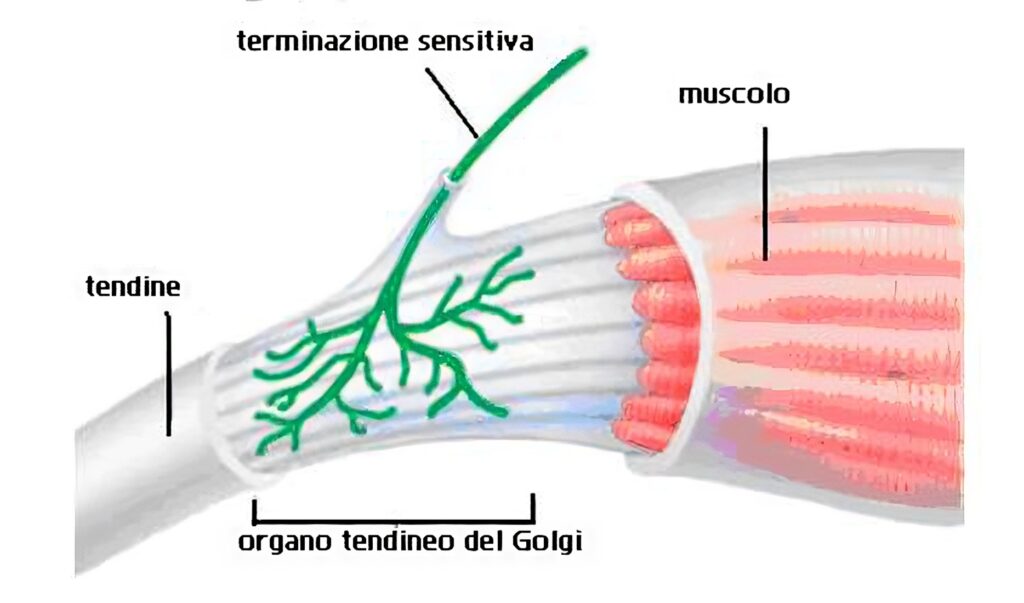Golgi tendon organs
Golgi tendon organs are sensory structures found in the tendons of skeletal muscles. They consist of numerous nerve fibers wrapped in a connective capsule. These nerve fibers are sensitive to muscle tension and, when stressed, send signals to the spinal cord to cause muscle relaxation or adjustment of contraction in order to protect the muscles from injury. The Golgi tendon organs allow muscle contractile force to be adjusted according to the demands of physical activity and to possible dangerous situations for the muscle.
Anatomy and physiology
The Golgi tendon organs consist of a concentration of fusiform cells and afferent nerves that transmit information about muscle length and tension to the central nervous system.

The fusiform cells within the Golgi tendon organs are known as Golgi cells and contain numerous organelles, including mitochondria, rough endoplasmic reticulum, and lysosomes. The afferent nerve axons, known as type Ib nerve fibers, surround the Golgi cells and extend through a set of tendon fibrils.
In addition, Golgi cells can also detect the rate of change of muscle tension, providing additional information to the central nervous system about the dynamics of muscle contraction. Finally, the Golgi tendon organs are strategically located within the tendons where muscle tension is greatest, making them critical for regulating muscle strength during physical activity.
Role in propioception of Golgi tendon organs
The Golgi tendon organs are responsible for proprioception (i.e., perception of muscle movements, positions and tensions) and regulation of muscle contraction through the Golgi reflex.
Golgi reflex: This reflex is activated when muscle tension exceeds a certain level. When Golgi receptors are stimulated, they send signals to the spinal cord that cause muscle fibers to relax, allowing the muscle to relax and avoid injury or tearing. Basically, the Golgi reflex is a protective mechanism that prevents muscles from being damaged by excessive stress.
In summary, this organs are crucial for perceiving muscle position and movement, regulating muscle contraction, and preventing muscle injury.
To explore this topic further take a look at the most recent scientific publications on PubMed
This article was originally written in Italian and translated English via deepl.com. If you notice a major error in the translation you can write to [email protected] to report it. Your contribution will be greatly appreciated



